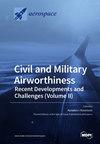Development of a Controlled Dynamics Simulator for Reusable Launcher Descent and Precise Landing
IF 2.2
3区 工程技术
Q2 ENGINEERING, AEROSPACE
引用次数: 0
Abstract
This paper introduces a Reusable Launch Vehicle (RLV) descent dynamics simulator coupled with closed-loop guidance and control (G&C) integration. The studied vehicle’s first-stage booster, evolving in the terrestrial atmosphere, is steered by a Thrust Vector Control (TVC) system and planar fins through gain-scheduled Proportional–Integral–Derivative controllers, correcting the trajectory deviations until precise landing from the reference profile computed in real time by a successive convex optimisation algorithm. Environmental and aerodynamic models that reproduce realistic atmospheric conditions are integrated into the simulator for enhanced assessment. Comparative performance results were achieved in terms of control configuration (TVC-only, fins-only, and both) for nominal conditions as well as with external disturbances such as wind gusts or multiple uncertainties through a Monte Carlo analysis to assess the G&C system. These studies demonstrated that the configuration combining TVC and steerable planar fins has sufficient control authority to provide stable flight and adequate uncertainties and disturbance rejection. The developed simulator provides a preliminary assessment of G&C techniques for the RLV descent and landing phase, along with examining the interactions that occur. In particular, it paves the way towards the development and assessment of more advanced and robust algorithms.开发用于可重复使用发射装置下降和精确着陆的受控动力学模拟器
本文介绍了一种与闭环制导和控制(G&C)集成相结合的可重复使用运载火箭(RLV)下降动力学模拟器。所研究的运载火箭的第一级助推器在地球大气层中演化,由推力矢量控制(TVC)系统和平面鳍通过增益调度比例-积分-微分控制器进行转向,修正轨迹偏差,直到根据连续凸优化算法实时计算的参考轮廓精确着陆。模拟器还集成了再现现实大气条件的环境和空气动力模型,以加强评估。通过蒙特卡洛分析评估 G&C 系统,在标称条件下以及在阵风或多重不确定性等外部干扰条件下的控制配置(仅 TVC、仅鳍片和两者)方面取得了性能比较结果。这些研究表明,结合 TVC 和可操纵平面鳍片的配置具有足够的控制权,可提供稳定的飞行和充分的不确定性及干扰抑制。所开发的模拟器对 RLV 下降和着陆阶段的 G&C 技术进行了初步评估,并检查了发生的相互作用。特别是,它为开发和评估更先进、更稳健的算法铺平了道路。
本文章由计算机程序翻译,如有差异,请以英文原文为准。
求助全文
约1分钟内获得全文
求助全文
来源期刊

Aerospace
ENGINEERING, AEROSPACE-
CiteScore
3.40
自引率
23.10%
发文量
661
审稿时长
6 weeks
期刊介绍:
Aerospace is a multidisciplinary science inviting submissions on, but not limited to, the following subject areas: aerodynamics computational fluid dynamics fluid-structure interaction flight mechanics plasmas research instrumentation test facilities environment material science structural analysis thermophysics and heat transfer thermal-structure interaction aeroacoustics optics electromagnetism and radar propulsion power generation and conversion fuels and propellants combustion multidisciplinary design optimization software engineering data analysis signal and image processing artificial intelligence aerospace vehicles'' operation, control and maintenance risk and reliability human factors human-automation interaction airline operations and management air traffic management airport design meteorology space exploration multi-physics interaction.
 求助内容:
求助内容: 应助结果提醒方式:
应助结果提醒方式:


